Sceloporus tristichus
—
Plateau Lizard
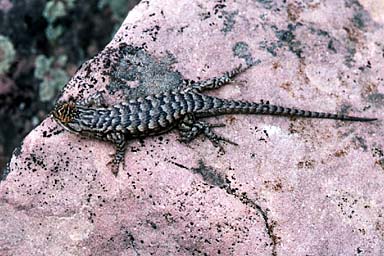
This distinctively marked individual was perhaps the only one I saw that was clearly a Plateau Lizard and not a Northern Sagebrush Lizard.
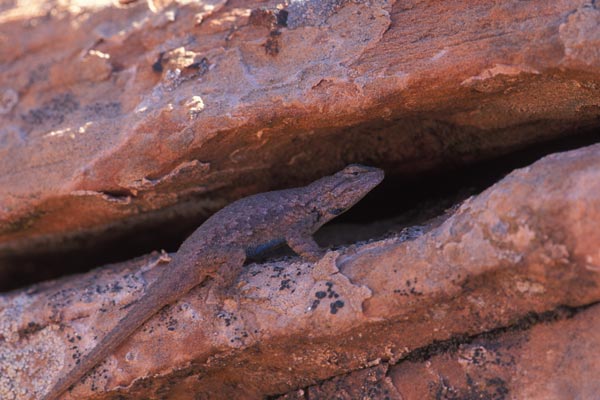
These lizards were formely considered to be a subspecies of Eastern Fence Lizard, Sceloporus undulatus elongatus. But they were shown to be a separate species in 2002 in a study accepted by the editors of the SSAR names list.
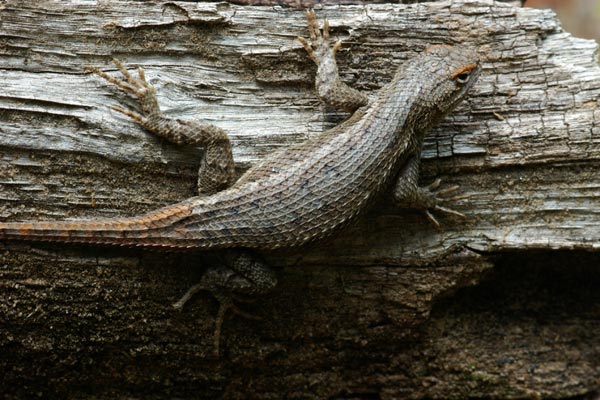
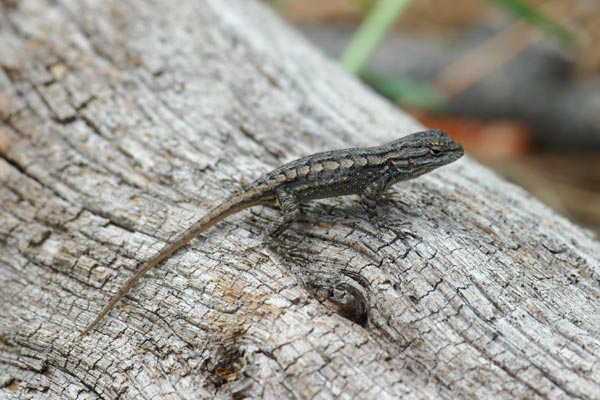
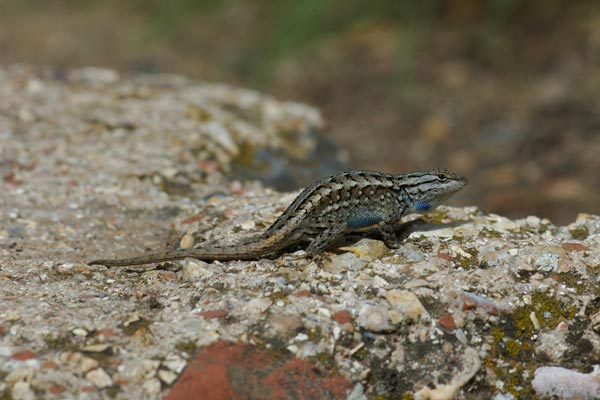
These lizards were ubiquitous on the logs and rocks surrounding the high desert oasis of Oak Creek Canyon. The top one had prominent orange highlights; the middle one is a tiny baby; the bottom one is apparently trying to look intimidating by puffing up its body and stretching its legs high.
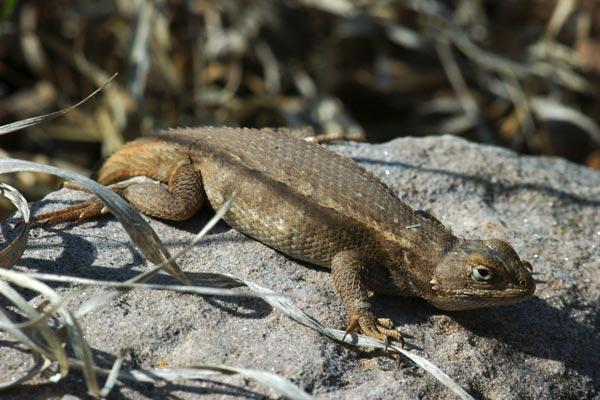
Here's a particularly fat (gravid?) plateau lizard basking in the late afternoon sun.
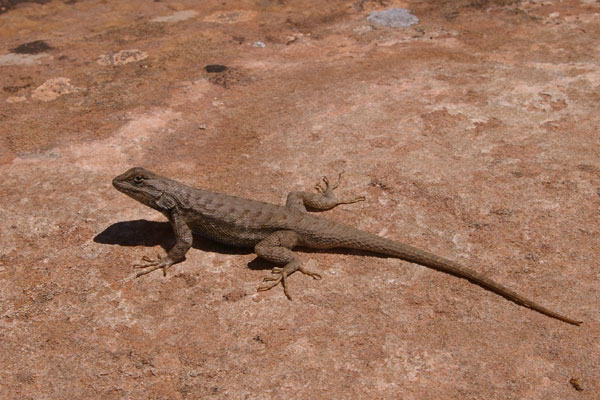
Nothing fancy here, just your classic lizard in a classic lizard pose.
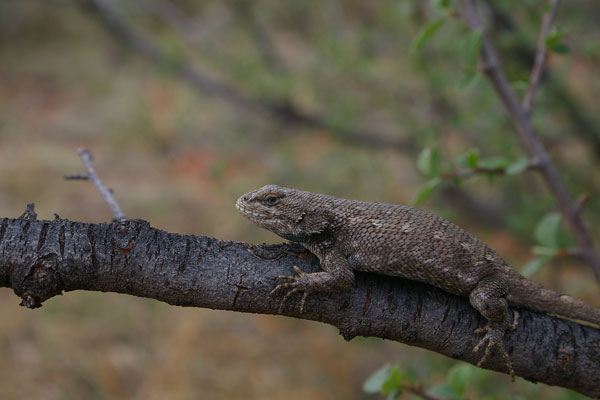
This extra-chubby plateau lizard is probably a gravid female.
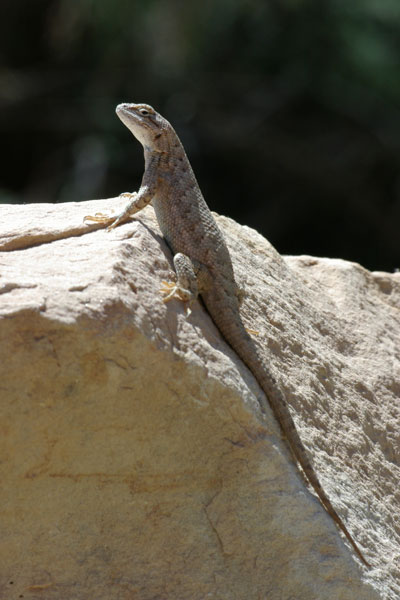
This brave lizard was picturesquely posed on a boulder near the parking lot. It let me approach very closely, then would eventually scuttle off. But each time, it only took a few minutes before it was back on that same boulder showing off its buff physique.
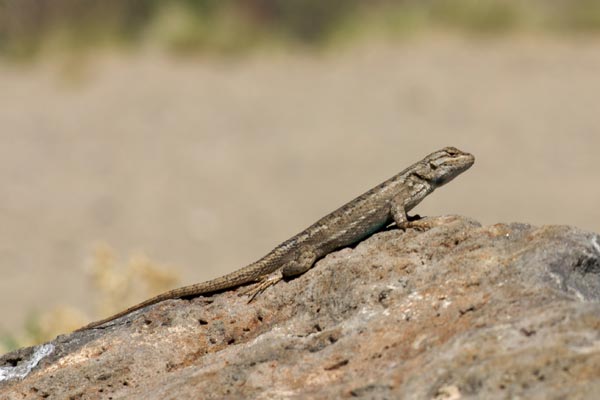
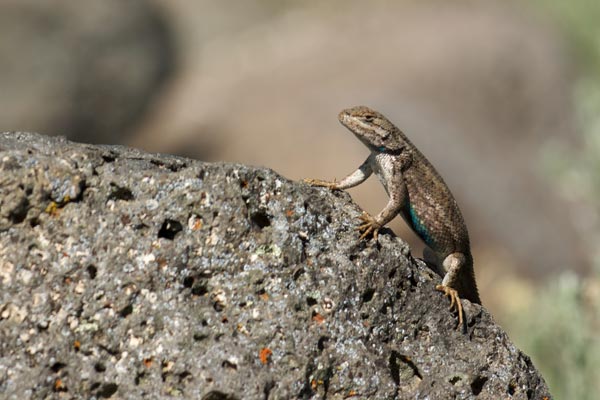
We spent just an hour or so one morning at Orilla Verde National Recreation Area on our way from Taos down to Santa Fe, mostly to give our dogs a chance to stretch their legs. The Plateau Lizards and Plateau Whiptails were just starting to wake up and get some morning sun.
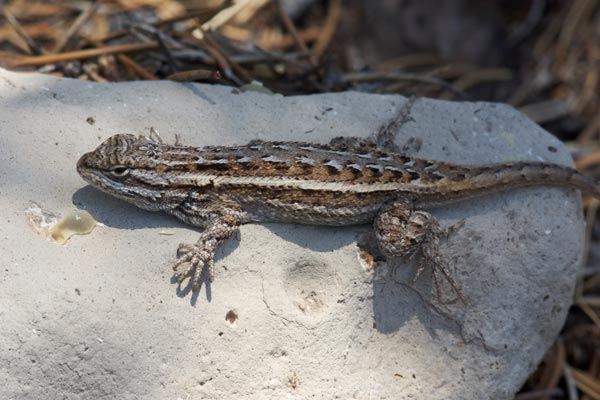
We stopped for a lunch at a National Forest road not too far from the tiny town of Corona. The two most common sights in the area were cow pies and Plateau Lizards. This young fellow was the prettiest of the Plateau Lizards that I saw.
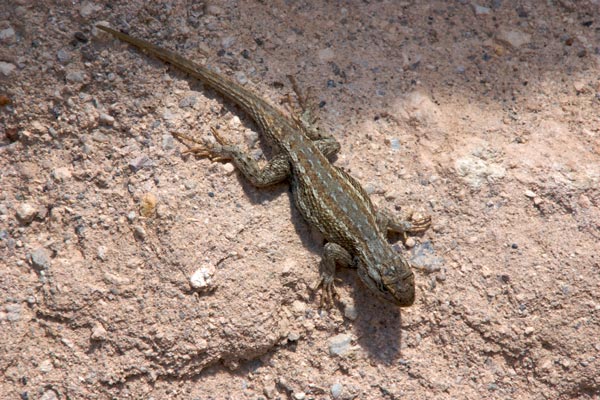
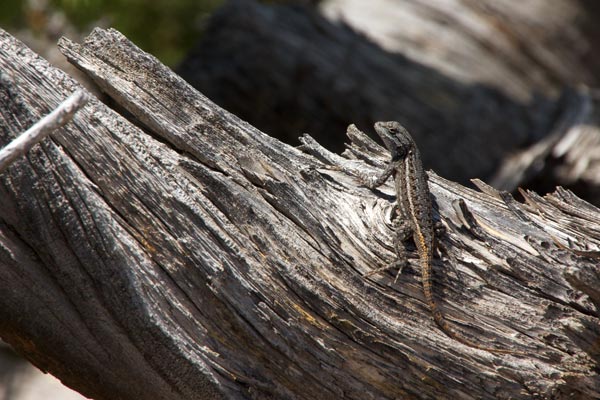
These lizards, like many Sceloporus, are habitat generalists. They can be found on the ground, on rocks, on logs, etc.
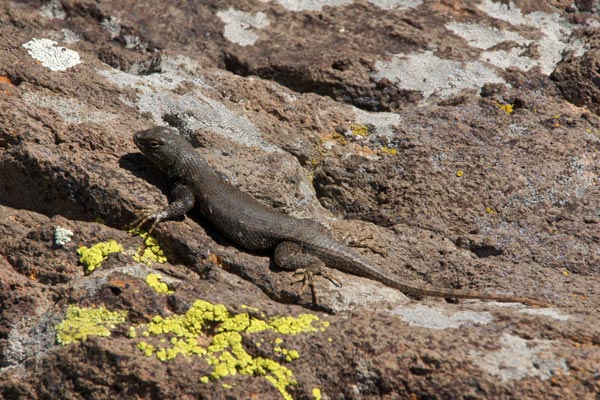
This was a large dark individual, catching the first warmth of the day.
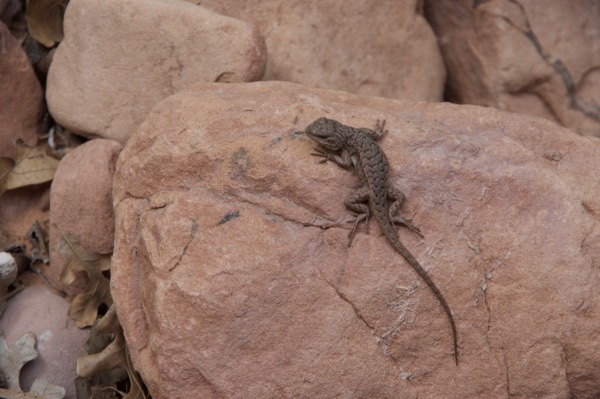
We had been hiking for at least an hour on a cool morning on a beautiful Moab hiking trail without seeing a single lizard. Scenic beauty is great and all, but, I mean, really. I was hoping for a colorful Moab-style collared lizard to break the spell, but had to settle for this young scrawny-looking Plateau Lizard.
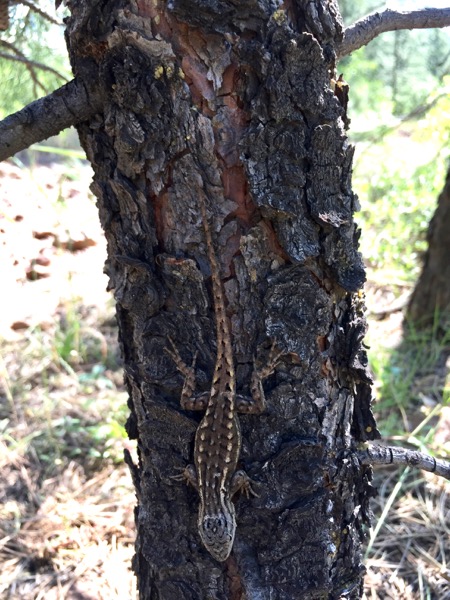
I hadn't seen any lizards in several days of hikes in this part of Colorado, so even an extremely common species like this one was enough to bring a smile to my face.
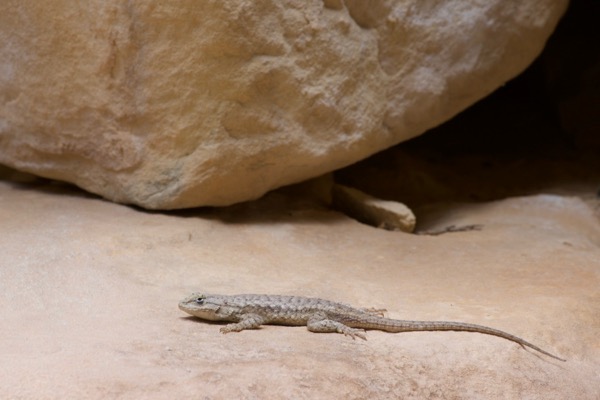
The Plateau Lizards in this area might not be particularly good-looking, but their bland coloration is a good match for the sandstone habitat.
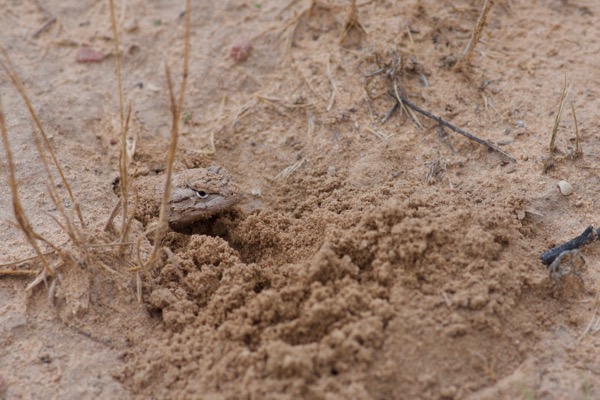
My wife Monica and I stayed on the grounds of Best Friends Animal Sanctuary for a couple of days so that she could pick some of the Best Friends folks' brains for ideas relevant to the dog rescue organization that she helps run. While there, we took our own dog contingent out for their morning walk on a trail on the grounds of Best Friends, where this lizard head just off the trail caught my eye. Rise and shine, little lizard!
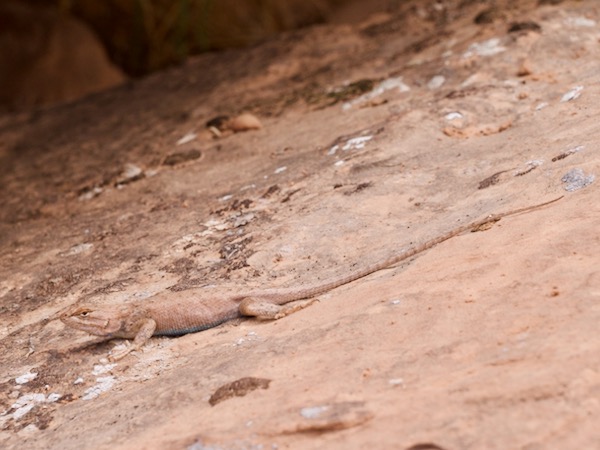
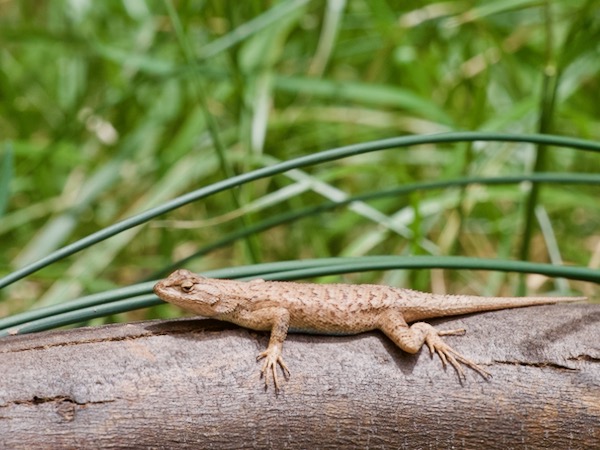
Like the Plateau Side-blotched Lizards, these Plateau Lizards have evolved a plain coloration that closely matches the rocky surfaces upon which they spend most of their time. It doesn't work quite as well on branches, but whatever.
Printed references:
- Bartlett, R. D., Bartlett, P. B. 1999. A Field Guide to Florida Reptiles and Amphibians
- Behler, J. L., King, F. W. 1979. The Audubon Society Field Guide to North American Reptiles & Amphibians
- Brennan, T. C. and Holycross, A. T. 2006. A Field Guide to Amphibians and Reptiles in Arizona
- Carmichael, P., Williams, W. 1991. Florida's Fabulous Reptiles & Amphibians
- Conant, R., Collins, J. T. 1998. Peterson Field Guide to Reptiles and Amphibians of Eastern and Central North America, Third Edition, expanded
- Crother, B. I. (ed.) 2017. Scientific and Standard English Names of Amphibians and Reptiles of North America North of Mexico, with Comments Regarding Confidence in Our Understanding, Eighth Edition
- Degenhardt, W. G., Painter, C. W., Price, A. H. 1996. Amphibians & Reptiles of New Mexico
- Hanson, J., Hanson, R. B. 1997. 50 Common Reptiles & Amphibians of the Southwest
- Monday, D.C., Dobolek, R. 1999. Arizona Wildlife Views, Special Edition
- Smith, H. M. 1995. Handbook of Lizards: Lizards of the United States and Canada
- Smith, H. M., Brodie, E. D. Jr. 1982. Reptiles of North America: A Guide to Field Identification
- Stebbins, R. C. 2003. Peterson Field Guide to Western Reptiles and Amphibians, Third Edition
- Wauer, R. H. 1964. Reptiles and Amphibians of Zion National Park